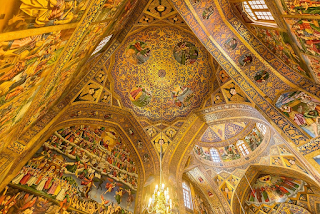Demons in Yeghishe's History
Yesterday, I was reminded of this excerpt from Yeghishe’s History:
But if it appears to you that there exists evil in God’s creatures, say it boldly, for you may learn of the true good. You called the demons evil; [but] there are also good demons, which you and we call angels—and if they so resolve, angels can be evil. This appears also among people, and even among sons [begotten] by the same father; one is obedient and acquiescent to his father, and the other is more wicked than Satan. [Each] man himself even appears to be divided in two, sometimes evil and sometimes good—he who is good becomes evil, and when that happens, he returns again to good, and yet his nature is one [and the same].
I recalled this parallel from Yeznik’s Against the Sects, where he refutes the astrologers:
And it is clear that just as the star [astrology] is not the cause of kingship, likewise neither is it the cause of power, nor is it the cause of making people wealthy. Above all in fact we see the wealthy people become impoverished and the poor become wealthy.
It’s interesting that there was enough wealth mobility at the time to warrant such a statement. He continues:
Moreover, can they say that one and the same star can be the cause of wealth and poverty, and of power and weakness? Because sometimes too we see the strong become weak and the weak become mighty, and the evil ones become prudent and the prudent become evil.
This in turn made me recall another line from Yeghishe:
...very frequently evil comes from good men, and then the most perfect good from the most evil men.
Is there a name for this device? They are chiasmatic, of course, but these ones also involve the same individual undergoing polarity transitions: good-evil, rich-poor, strong-weak, etc.



Comments
Post a Comment